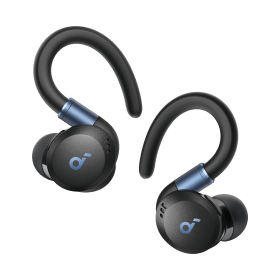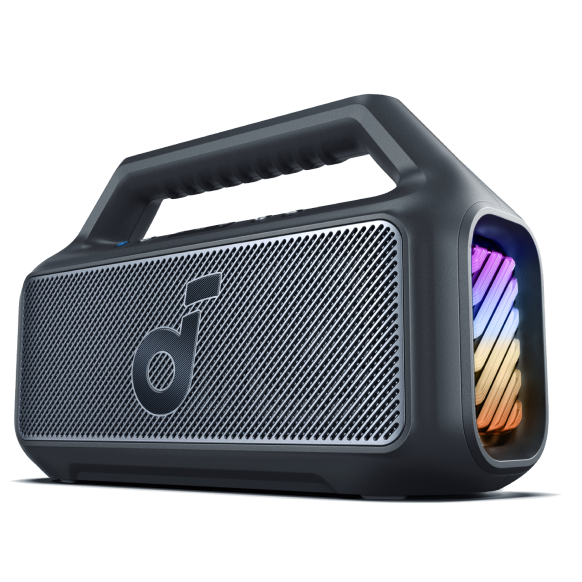Noise Isolating vs Noise Cancelling: Which is Right for You?
In a world filled with constant noise, finding a moment of tranquillity can feel like a luxury. That's where noise isolating vs noise cancelling earbuds come to the rescue. These innovative technologies aim to block out unwanted ambient sounds and enhance your audio experience. But what's the difference between sound isolating vs noise cancelling, and which one is right for you? In this article, we will delve into the realms of noise isolation vs noise cancellation, highlighting their features, benefits, and differences. By the end, you'll have a clear understanding of these technologies, empowering you to make an informed decision when choosing your next pair of earbuds.

What is Noise Isolation?
Noise isolation, also known as passive noise cancellation (PNC), is a way of blocking the surrounding noise by creating a physical barrier between you and the outside world. This passive technology often creates a seal around your ears, much like cupping your hands over your ears to reduce noise. Noise isolating earbuds utilize foam pads or ear tips to form a secure fit and effectively block out external sounds.
What is Noise Cancellation?
After knowing what is voice isolation, let's also see what does noise cancelling mean and is noise cancelling bad for your ears. Noise cancellation, also called active noise cancellation (ANC), takes a more active approach to combating ambient noise compared to noise isolation. This technology employs built-in microphones in the earbuds to detect external sounds, then generates anti-noise, which is an opposing sound wave, to cancel out the incoming noise. By producing a counter-signal that neutralizes the ambient sound waves, noise cancellation aims to provide a more immersive and uninterrupted audio experience. Therefore, ANC earbuds or headphones are not bad but great and very popular today for their portability and great listening experience.

Differences between Noise Cancelling and Noise Isolating Earbuds
While both noise cancelling and noise isolating earbuds serve the purpose of reducing unwanted noise, they employ different approaches to achieve this goal. Here are the key differences:
1. Noise Reduction:
Noise isolating earbuds utilize their physical attributes and materials to block out ambient noise. The effectiveness of noise reduction mainly depends on the fit and the materials used. For example, in-ear monitors (IEMs) or earbud-style earphones tend to offer superior noise isolation by creating a snug seal in the ear canal. Generally, passive noise cancellation can reduce mid to high-frequency noises by approximately 15dB to 30dB.
In contrast, noise cancelling earbuds employ electronic components to emit sound waves that counteract environmental noise. This technology actively reduces ambient noise, particularly low-frequency sounds, by an average of 30dB. However, the effectiveness of noise cancellation mainly depends on the quality of the technology implemented, which may vary based on the product or price range. High-end noise-canceling earbuds can typically block up to 95% of ambient noise.
2. Sound Quality:
Noise isolating earbuds often excel in sound quality since they focus on design, materials, and construction rather than dedicated noise-canceling electronics to deliver an optimal audio experience. These earbuds prioritize recreating pure sound from the source, which appeals to audiophiles seeking clarity and accuracy.
On the other hand, noise cancelling earbuds, due to the process of sampling ambient sound and producing an opposing signal, may introduce slight "coloration" to the audio output, because the circuitry and canceling signal can impact accuracy, affecting sound quality to some extent. However, advancements in technology have allowed certain noise-canceling earbuds, such as the Soundcore Liberty 4 NC All-New Earbuds to effectively block out ambient noise while maintaining excellent sound quality.

3. Power Consumption:
Noise isolating earbuds do not require any additional electronics or power source to operate. They are ready to use anytime without the need for charging. While active noise-canceling earbuds rely on power, typically batteries, to function effectively. So users need to charge these earbuds regularly to enjoy the noise-canceling capabilities fully even though they can still passively block noise when ANC is turned off.
4. Price:
Typically, noise-canceling earbuds tend to be more expensive than their noise isolating counterparts because the addition of ANC components increases the cost of materials and production. And lower-priced ANC earbuds may not offer the same level of performance as higher-priced models.
Passive vs Active Noise Cancelling: Which is Better for You
Since you know what sets sound isolation vs noise cancellation apart, next let's explore active noise cancellation vs passive noise cancellation earbuds, which are better suited for you. Generally, both can enhance your listening experience by reducing unwanted noise. You can choose an appropriate choice depending on the specific requirements and your preferences.
On one hand, noise-isolating earbuds or IEMs are ideal in a busy loud office environment or while you're studying. They effectively block out high noise going up to utter work disruption, allowing you to focus better and enjoy clear conversations. Additionally, when working with loud equipment, passive noise cancelling can also be a practical option, reducing mid to high-frequency sounds and providing significant noise reduction.
On the contrary, active noise cancelling (ANC) earbuds, taking soundcore Liberty 4 NC Earbuds as an example, are recommended when you do workouts in the gym. They enable you to drown out ambient noise, allowing you to enjoy your personal playlist without distractions. Moreover, while traveling on planes or trains, active noise cancellation is beneficial as it significantly reduces unwanted sounds, providing a peaceful and relaxed journey. And ANC earbuds are also useful when you need to study, work in public places, or simply take a break from the surrounding hustle and bustle. They help eliminate distractions, enabling you to focus and be productive.
Conclusion
Now that you know what does voice isolation or active noise cancellation mean. Noise isolating earbuds provide a cost-effective solution with decent noise reduction in loud environments, while noise cancelling earbuds offer superior performance when you want to focus. So you can assess your needs, consider the pros and cons of each technology, and try out different models to find the perfect fit for you. Whether you opt for the passive simplicity of noise isolation or the active sophistication of noise cancellation, check out Soundcore earbuds to elevate your audio experience and provide a sanctuary of tranquillity in a noisy world.
FAQ
Is passive noise cancellation the same as noise isolation?
Yes, passive noise cancellation often means noise isolation, which involves blocking external noise through the use of physical barriers. In headphones, noise isolation is achieved by creating a secure seal using foam pads in the ear cups which act as a barrier to prevent ambient noise from reaching your ears and resulting in a quieter listening experience.
Which noise cancelling earbuds should I pick?
When considering noise cancelling earbuds, the Liberty 4 NC All-New Earbuds (Blue) stand out with their advanced noise cancelling systems, reducing noise by up to 98.5%. Featuring Adaptive ANC 2.0, 11mm drivers, Hi-Res Wireless, and LDAC technology, they deliver crisp sound. Plus a customizable EQ, 10/50 hours of battery life, IPX4 water resistance, and 6 microphones for clear calls, the Liberty 4 NC offers a compelling package for you to enjoy a quieter and more immersive listening experience.














































